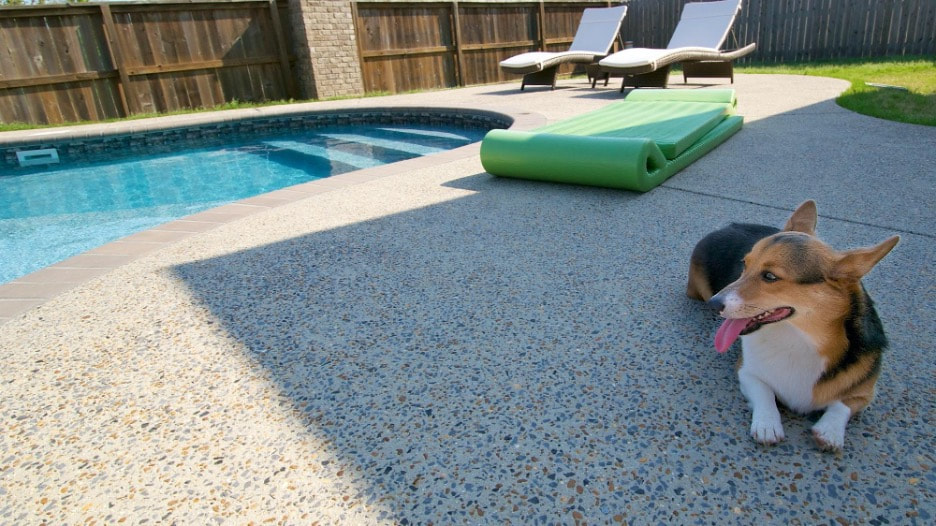|
Two things might give you pause when considering whether to allow your pet to swim in your outdoor swimming pool: safety and maintenance concerns. Will your dog damage any parts of the pool? Is it a secure environment for them to enjoy without you needing to watch their every move?
Fortunately, there are some small tips to bear in mind when it comes to making your swimming pool pet-friendly. Consider a pre-swim routine Just like you wouldn’t let young kids swim without inflatable armbands or applying a little sunscreen first, you should think about developing a pre-swim routine with your dog. Your furry friend might be tempted to jump into the pool at first sight, but their excess fur will soon become a nightmare for your filtering system. Give your dog a quick wash with your hose before letting them jump into the pool. This will help rid them of any excess hair or dirt, leaving your pool as clean as possible. Teach them a command, such as “okay”, that they must hear to know that they are allowed inside the pool. Risk assessment for potential damage Could your pet cause any damage by using your pool? If you own a fiberglass or cement-lined pool, there’s no chance they can cause any damage. Vinyl-lined pools are a little more exposed to your dog’s nails. If your dog is not a very confident swimmer, their scratching against the walls or stairs could cause some damage to the vinyl. A dog-safe pool liner will do the trick here. Installing special stairs for your pet, or a stationary float for them to relax on, can help calm them down inside the pool. The importance of stairs As you would expect, dogs are incapable of using the vertical, metal stairs that humans use to get in and out of a pool. It is vital that they have an easier method of access, usually via stairs that gradually allow access through a shallow end of the pool. You could also consider installing a few specialist dog ladders around the pool to give them an easy option to leave the pool if they need to. Safety comes first! Last but not least, you should always consider the general safety of your pet around the pool. Can they definitely swim? If not, consider using a dog life jacket. Dogs might be natural swimmers, but always check that they are comfortable being inside the pool. Also, the chlorinated water used in pools is generally safe, but be vigilant in checking your pet’s skin for any signs of irritation and give them a rinse after a pool session. Finally, ensure that your dog does not start drinking the pool water. They will be fine if they ingest a little, but help them to avoid lapping it up like a drink. The chlorine could cause gastrointestinal issues, or some even worse problems if large amounts are consumed. --- Enjoy making your pool a safer environment for your pets! Adding a few installations and training them to behave sensibly around the pool will help you make sure your whole family has a summer of fun.
0 Comments
Leave a Reply. |






